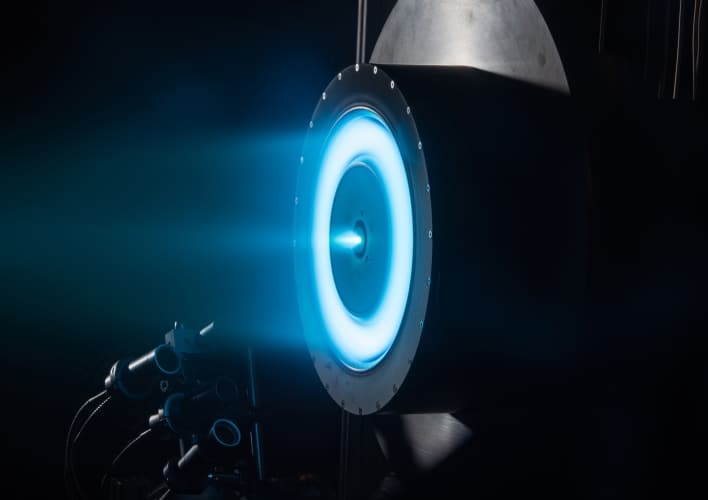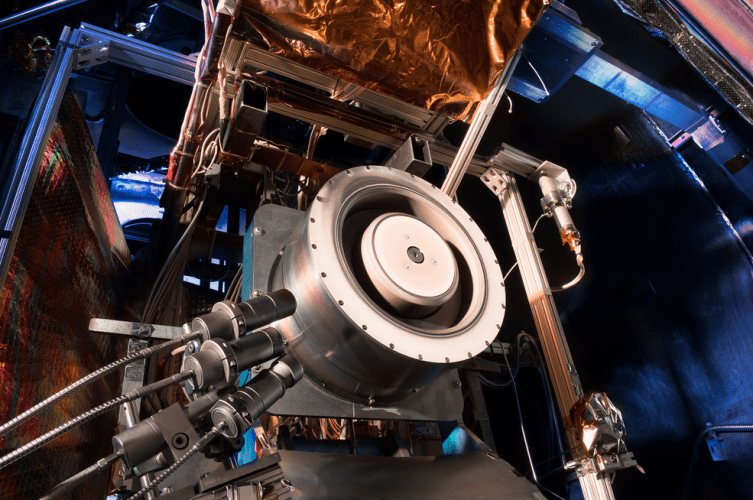
The Advanced Electric Propulsion System (AEPS) will be designed to extend NASA’s deep space exploration capabilities, and is expected to be a key component of the space agency’s Journey to Mars and Asteroid Redirect Mission (ARM).
Typically, these systems use large solar arrays to convert sunlight into electrical power. That energy is fed into highly efficient thrusters that provide gentle but non-stop thrust throughout the mission. According to NASA, the AEPS could potentially increase spaceflight fuel efficiency by a factor of 10 compared to current rocket technology, as well as providing double the thrust capability of current electrical systems.
“Through this contract, NASA will be developing advanced electric propulsion elements for initial spaceflight applications, which will pave the way for an advanced solar electric propulsion demonstration mission by the end of the decade,” said Steve Jurczyk, associate administrator of NASA’s Space Technology Mission Directorate (STMD).
“Development of this technology will advance our future in-space transportation capability for a variety of NASA deep space human and robotic exploration missions, as well as private commercial space missions.”

The AEPS will consist of a thruster, a power processing unit (PPU), a low-pressure xenon flow controller, and an electrical harness. NASA has previously developed and tested a prototype thruster and PPU that Aerojet Rocketdyne will be able to use as a reference design. The space agency has also recently carried out work on advanced solar array systems, which it believes will be integrated into the design of the AEPS.
NASA has been working on electric propulsion systems since the 1950s, and this latest mission is part of its wider Solar Electric Propulsion (SEP) project. ARM, NASA’s mission to capture an asteroid boulder and place it in orbit around the moon in the mid-2020s, will test the largest and most advanced SEP system ever utilised for space missions.




Poll: Should the UK’s railways be renationalised?
Rail passenger numbers declined from 1.27 million in 1946 to 735,000 in 1994 a fall of 42% over 49 years. In 2019 the last pre-Covid year the number...